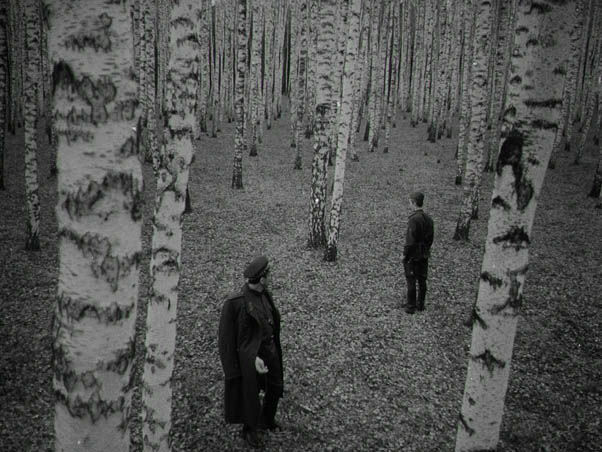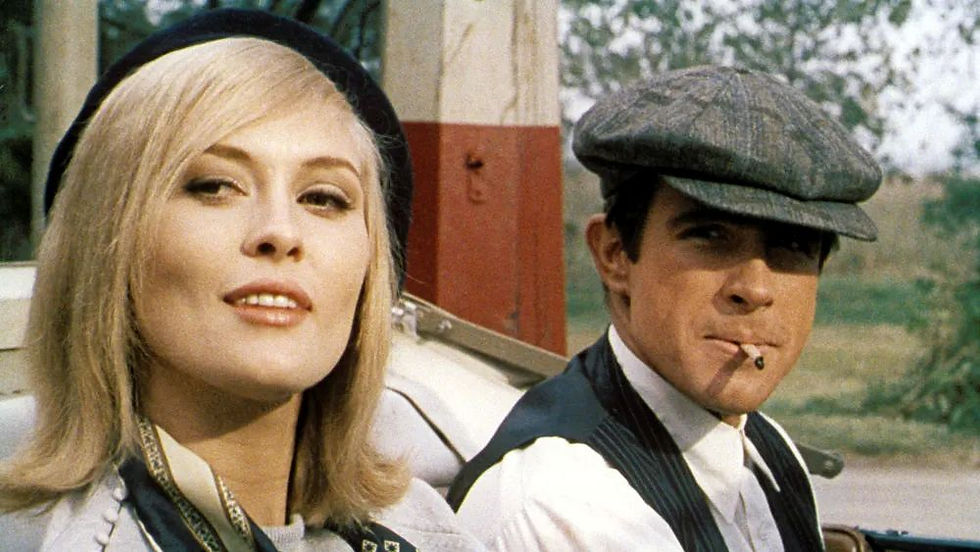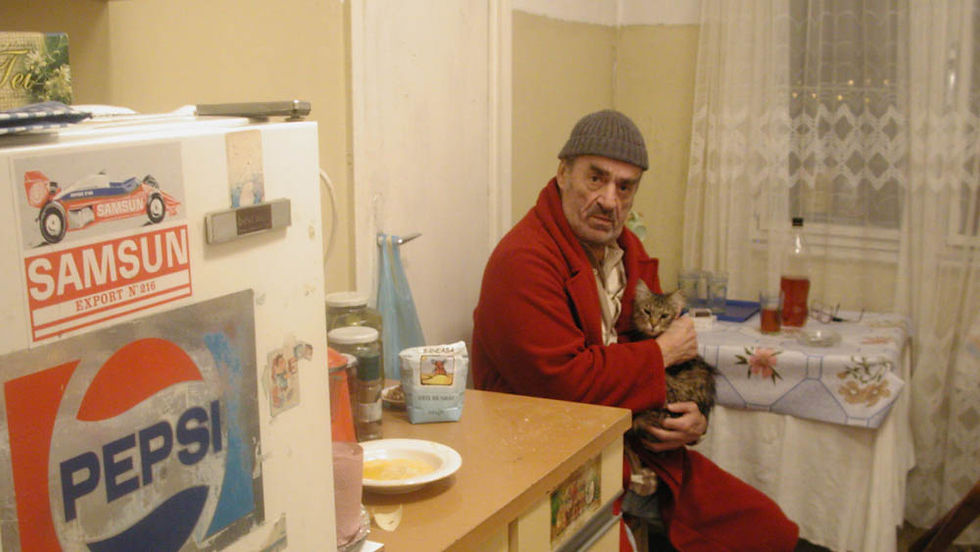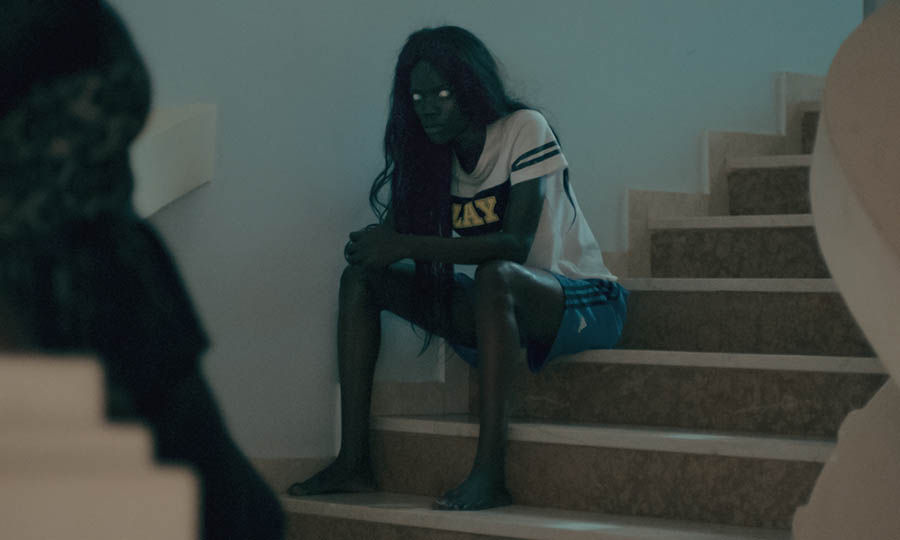- -
- Aug 13
- 6 min read

SILVER SCREEN
FILMS TO RESCUE YOU FROM THE SUMMER’S DIMNESS
BÉLA TROTTA
August 13, 2025
In the dog days of summer, when the brain softens from boredom and the belly aches from too much ice cream, Sélavy asked fabled film critic Béla Trotta to offer a cure. His prescription? Twenty-five films to revive your inner life before it slips into full seasonal lobotomy. These selections aren’t summer escapism—they’re cinematic resurrections.
This list of twenty-five films is not a lineup of my personal favorites, nor is it a survey of auteur cinema. It is something else—a constellation, scattered but coherent, shaped less by taste than by temperament. These films ask something of the viewer. Morally serious, politically charged, and formally rigorous, they do not flatter or entertain in any conventional sense. They do not pander to sentiment, nor do they reward passive attention. Instead, they demand an encounter—sometimes gentle, often bruising—with the deeper questions of what it means to live, to act, to witness. They resist the spectacle of mainstream cinema and the hollow cleverness of art-house cliché. You will find no winks here, no tidy resolutions, no ironic detachment masquerading as insight. These works unfold with the pace of thought. They inhabit silence, stretch time, let ambiguity fester.

Menilmontant (1926, dir. Dimitri Kirsanoff) is a wordless tragedy of two sisters in Paris, rendered in visual fragments and emotional rupture. Its montages anticipate both Soviet cinema and French poetic realism. Violence appears suddenly, like a tear in the fabric of everyday life. One of the most sensorially intimate silent films ever made.

La terra trema (1948, dir. Luchino Visconti) is a Marxist melodrama about Sicilian fishermen, played by non-actors speaking in dialect. Visconti’s neorealism is operatic yet brutal, lyrical yet unromantic. The sea is both backdrop and antagonist, a force indifferent to justice. History enters through poverty, pride, and the cruelty of markets.

On the Bowery (1956, dir. Lionel Rogosin) is a docu-fiction portrait of down-and-out men drifting through postwar New York’s Skid Row. Shot in real bars with real drunks, it blurs the line between documentary and performance. Nothing is embellished; everything is worn. The film’s power lies in its refusal to redeem or explain. Just bodies, broken routines, and a city that looks away.

A Man Escaped (1956, dir. Robert Bresson) tells of a prisoner who plans his escape with monastic precision. Bresson’s camera avoids drama and finds grace in repetition. Sound and gesture replace plot; resistance becomes ritual. An austere study in willpower, silence, and spiritual defiance.

Ivan’s Childhood (1962, dir. Andrei Tarkovsky) centers on a child in World War II who wanders through memory, nightmare, and ruined landscapes. Tarkovsky’s debut is beautiful and mournful, already masterful. The war is perceived not through strategy, but through trauma. Poetry and rubble share the same frame.

Les Carabiniers (1963, dir. Jean-Luc Godard) follows two peasants who go to war, lured by absurd promises of riches and travel. Godard dismantles patriotism with savage humor and theatricality. Postcards from conquest replace the actual spoils. The film ends not with victory, but with farce and execution.

The Round-Up (1966, dir. Miklós Jancsó) is set in a barren fortress where political prisoners are held under a regime of deceit. Jancsó choreographs control through long takes and martial geometry. Power circulates, never rests—no character is truly central. As abstract as it is ruthless, this film is about systems, not stories.

Persona (1966, dir. Ingmar Bergman) unfolds as an actress goes silent, a nurse speaks too much, and identities blur. Filmic reality fractures—language, face, and frame become unstable. Is it madness, performance, or a spiritual crisis? A claustrophobic chamber piece that expands into cosmic terror.

The Battle of Algiers (1966, dir. Gillo Pontecorvo) stages urban warfare between French colonial forces and Algerian resistance. Shot like a newsreel, edited like a thriller, structured like a tragedy, it never chooses heroes—only history. Its realism is explosive, its aftermath haunting.

Bonnie and Clyde (1967, dir. Arthur Penn) tells of outlaws on the run in Vietnam, or is it the Midwest? Shot with French New Wave flair and Depression-era grit. The violence is sudden, glamorous, and disorienting. Crime becomes performance, death becomes legend. A myth exploded in real time.

Playtime (1967, dir. Jacques Tati) turns Paris into a grid of glass, reflections, and polite disorientation. Tati’s every frame is a choreography of modern alienation. There’s almost no plot—just movement, architecture, absurdity. A comedy of estrangement and visual overload.

Profound Desires of the Gods (1968, dir. Shōhei Imamura) sees an engineer arrive on a remote island where myth and incest mingle. It’s a clash between industrial Japan and animist ritual. Sensual, sprawling, and defiantly unclean. The gods are not absent—they’re feral, buried in the earth.

Punishment Park (1971, dir. Peter Watkins) imagines dissidents hunted across the California desert by military tribunals. Watkins stages pseudo-documentary as political nightmare. Every speech is a protest, every frame a provocation. It imagines America at war with its own conscience.

Ulzana’s Raid (1972, dir. Robert Aldrich) follows a cavalry patrol pursuing an Apache warrior across desert and time. Cruelty escalates, morality erodes, and command structures collapse. It critiques both savagery and the myth of civilization. A Western with nothing left to romanticize.

Mr. Klein (1976, dir. Joseph Losey) follows a French art dealer mistaken for a Jew in 1942 Paris. Losey blurs bureaucracy and identity into a Kafkaesque maze. Every frame is elegant and diseased. A thriller where the chase is metaphysical.

Broadway Danny Rose (1984, dir. Woody Allen) is about a sentimental agent for lounge acts who gets caught in a Mob mess. Maybe an outlier here, but then not really. Filmed in nostalgic black and white, drenched in a loser’s grace. Every joke hides melancholy, every gesture a plea. Love and loyalty survive the schmaltz.

Come and See (1985, dir. Elem Klimov) follows a Belarusian boy who joins the partisans and descends into hell. Faces degrade before our eyes, sanity cracks in real time. Klimov’s camera bears witness, never flinches. It ends not with a bang, but with silence and madness.

The Match Factory Girl (1990, dir. Aki Kaurismäki) tells of a factory worker drifting through Helsinki with muted rage and minimal dialogue. Kaurismäki’s deadpan minimalism turns routine into quiet tragedy. Every gesture is loaded, every silence louder than violence. A revenge story told with the stillness of a cigarette burn.

The Quince Tree Sun (1992, dir. Víctor Erice) documents an aging painter trying to finish a still life over a summer. Nothing happens, and everything matters. It’s about looking, aging, doubt, and yellow fruit. Cinema becomes time passing with the brush.

Humanité (1999, dir. Bruno Dumont) sees a detective investigating a rape and murder in a northern French village. Emotion is blocked, reactions delayed, the body hyper-present. An anti-procedural where affect itself is the mystery. The horror is not who did it, but how we live with it.

The Death of Mr. Lazarescu (2005, dir. Cristi Puiu) charts a man shuttled between hospitals in a decaying medical system. Ambulances replace plot, nurses replace heroes. Darkly funny, desperately humane. Modern death as bureaucratic drift.

Red Road (2006, dir. Andrea Arnold) follows a CCTV operator who confronts a man from her past. Surveillance becomes both punishment and redemption. Grief clings to every surface, even when unspoken. A revenge film stripped of spectacle.

Silent Light (2007, dir. Carlos Reygadas) centers on a Mennonite man who falls in love with a woman not his wife. Shot in ethereal light with Bressonian stillness. Nature seems to forgive what the church cannot. Time dilates, faith fractures, grace lingers.

Atlantics (2019, dir. Mati Diop) imagines Senegalese construction workers who vanish at sea and return as spirits. Class, migration, and longing merge into dream logic. The sea is a grave, a border, a womb. A ghost story told through heat and humidity.

The Woman Who Ran (2020, dir. Hong Sang-soo) follows a woman visiting old friends while her husband stays home. Conversations drift, ellipses open, nothing happens twice. Minimalism becomes mystery. A gentle rebellion wrapped in politeness.

Honorable mention: Trace of Stones (1966, dir. Frank Beyer) features Manfred Krug as a charismatic but unruly foreman on a chaotic construction site in former East Germany. A love triangle unfolds against the rigid backdrop of socialist ideals. The “stones” are both the physical labor and the moral weight of utopia. Banned for decades, this film is both irreverent and quietly radical.
Béla Trotta (b. 1947 in Pécs, Hungary) is a fabled film critic, essayist, and occasional dramaturg for an avant-garde puppet theater. He calls the Cannes Film Festival “a sun-drenched funeral for film” and prefers VHS to restoration. Trotta’s long-promised memoir, “Projection Booth of the Soul,” remains unpublished and possibly apocryphal.
Cover image: Cinerama: the only screen big enough for your sense of drama

J'ai trouvé particulièrement pertinent votre point sur la manière dont la rumination peut amplifier les sentiments négatifs. C'est une observation clé qui résonne avec l'idée que nos pensées ont un impact direct sur notre bien-être émotionnel. Pour ceux qui cherchent à mieux comprendre ces mécanismes et à évaluer leur propre tendance, explorer des outils d'auto-évaluation peut être une étape éclairante. Il existe des ressources en ligne, comme le [test de neuroticisme](https://neuroticismtest.com), qui peuvent offrir un aperçu de ces traits de personnalité.